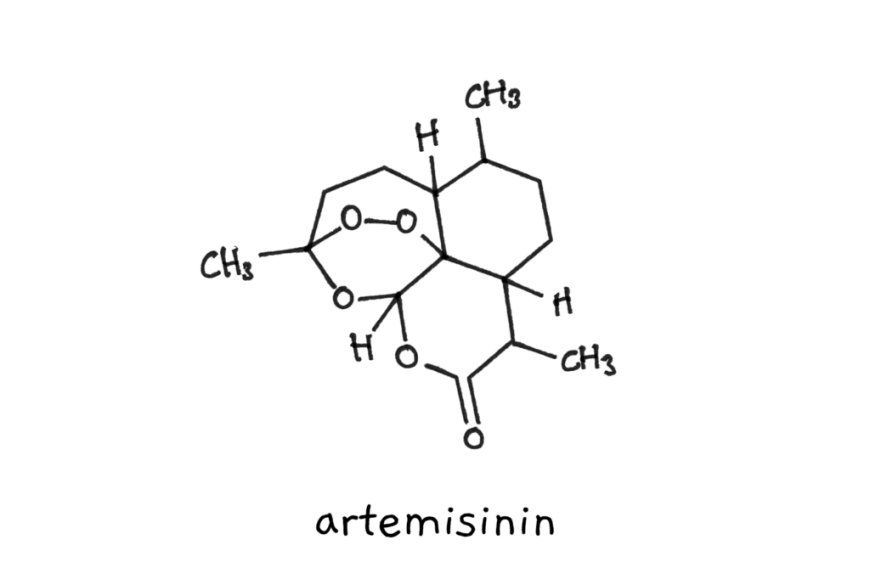Artemisinin Combination Therapy Market Expected to Reach USD 1031.75 Million by 2030, Driven by Rising Incidence of Malaria and Government Initiatives
The global artemisinin combination therapy market is expected to reach USD 1031.75 million in 2030, with a CAGR of 8.2% during the forecast period 2023-2030.

The Infinium Global Research analyzes the Artemisinin Combination Therapy Market over the period of 2023 to 2030. This report also provides detailed qualitative and quantitative analyses of the market dynamics, market size and future trends in global artemisinin combination therapy market. It will help a lot of decision makers to develop strategies and find new opportunities in the global markets of artemisinin combination therapy. The report covers market changing aspects including drivers, restraints, opportunities, and trends expected to encouragement the expansion of the artemisinin combination therapy market during the period.
The global artemisinin combination therapy market is expected to reach USD 1031.75 million in 2030, with a CAGR of 8.2% during the forecast period 2023-2030.
Get Sample pages of Report: https://www.infiniumglobalresearch.com/form/448?name=Sample
Infinium Global Research has released a new report analyzing the Artemisinin Combination Therapy (ACT) market from 2023 to 2030. This report provides valuable insights to help businesses gain a competitive edge.
Key Focus Areas:
- Market Players: Identify and analyze major players in the global ACT market, including their market share, strengths and weaknesses (SWOT analysis), and future development plans.
- Market Growth: Assess individual growth trends for different segments of the ACT market and their contribution to the overall market size.
- Growth Drivers and Challenges: Analyze the key factors influencing the market's growth, such as potential, opportunities, and drivers. Additionally, the report explores industry-specific challenges and risks that could hinder market expansion.
This report offers a comprehensive view of the ACT market, empowering businesses to make informed decisions and capitalize on future opportunities.
Combating Malaria with ACT:
- Artemisinin, derived from the Artemisia annua plant, effectively combats malaria parasites.
- Artemisinin-based combination therapies (ACTs) are the primary treatment for uncomplicated falciparum malaria, the deadliest form.
- ACTs work rapidly and consistently, overcoming resistance issues with older drugs like chloroquine.
- The World Health Organization recognizes ACTs as the frontline defense against malaria.
Varieties and Availability:
- ACTs come in various combinations, including Artesunate-Amodiaquine, Artemether-Lumefantrine, and others.
- Patients can access ACTs through hospitals, clinics, pharmacies, and various distribution channels.
Market Drivers:
- The rising global burden of malaria, particularly in vulnerable regions, fuels the demand for ACTs.
- ACTs' proven efficacy and reduced resistance risk make them the preferred treatment option.
- Growing research and development efforts aim to improve ACTs' effectiveness and accessibility.
- Collaboration between governments, NGOs, and pharmaceutical companies fosters innovation and affordability.
Challenges and Opportunities:
- High costs associated with ACTs pose a potential barrier to wider access.
- Continued collaboration between stakeholders presents an opportunity to expand access and enhance affordability.
Regional Analysis
- Middle East and Africa (MEA): This region holds the largest market share due to a large production base of artemisinin and high demand in malaria-endemic countries. Despite increased control efforts, logistical challenges persist in delivering ACTs to remote areas with high poverty rates. However, WHO initiatives and rising adoption rates point towards continued market growth in MEA.
- Asia Pacific (APAC): This region exhibits the fastest growth due to factors like population increase, economic development, and expanding healthcare infrastructure. The adoption of new ACTs, preventative measures, and the need to combat emerging drug-resistant malaria strains are key drivers in APAC.
· North America and Europe: While not explicitly mentioned as major players in the ACT market, these regions likely play a smaller role due to their lower malaria burden. Their focus might be on research and development or production of ACTs for distribution in endemic areas.
Market Segmentation
· By Therapy Type: This segment categorizes ACTs based on the specific drug combination used. Common therapy types include artesunate-amodiaquine, artemether-lumefantrine, and others.
· By Distribution Channel: This segment tracks how ACTs reach patients. Hospitals, clinics, and pharmacies are primary channels, while other channels may include specialized healthcare providers or government distribution programs.
Competitive Landscape
- Pharmaceutical Companies: Novartis AG, Cipla Inc., Sanofi S.A., Mylan N.V., and Hovid Berhad are some examples of well-known pharmaceutical companies that develop, manufacture, and distribute ACTs.
- Generic Drug Manufacturers: Companies like KPC Pharmaceuticals may specialize in producing generic versions of ACT medications, making them more affordable in some regions.
- API (Active Pharmaceutical Ingredient) Suppliers: Companies like Shanghai Desano Pharmaceuticals and Guilin Nanyao might focus on producing Artemisinin, the core ingredient in ACTs, which is then supplied to other manufacturers for final drug formulation.
- Contract Manufacturing Organizations (CMOs): Calyx Chemicals & Pharmaceuticals could be an example of a CMO that manufactures ACTs for other companies under contract.
- Regional Players: DENK PHARMA may be an example of a company with a strong presence in a specific region, contributing to the ACT market within that area.
This list showcases the diverse range of companies involved in bringing ACTs to patients worldwide.
Report Overview: https://www.infiniumglobalresearch.com/market-reports/global-artemisinin-combination-therapy-market
Future Outlook:
Despite cost concerns, the ACT market is expected to grow. Continued collaboration between stakeholders can make ACTs more affordable and accessible, ensuring this vital treatment remains a powerful weapon in the fight to eradicate malaria.
Conclusion:
Artemisinin combination therapy stands as a cornerstone in the fight against malaria. By addressing affordability concerns and fostering innovation, stakeholders can ensure ACTs remain accessible and effective, ultimately saving lives and improving health outcomes in malaria-endemic regions. The future of the ACT market appears promising, reflecting a collective global effort towards a malaria-free world.
What's Your Reaction?
 Like
0
Like
0
 Dislike
0
Dislike
0
 Love
0
Love
0
 Funny
0
Funny
0
 Angry
0
Angry
0
 Sad
0
Sad
0
 Wow
0
Wow
0















































